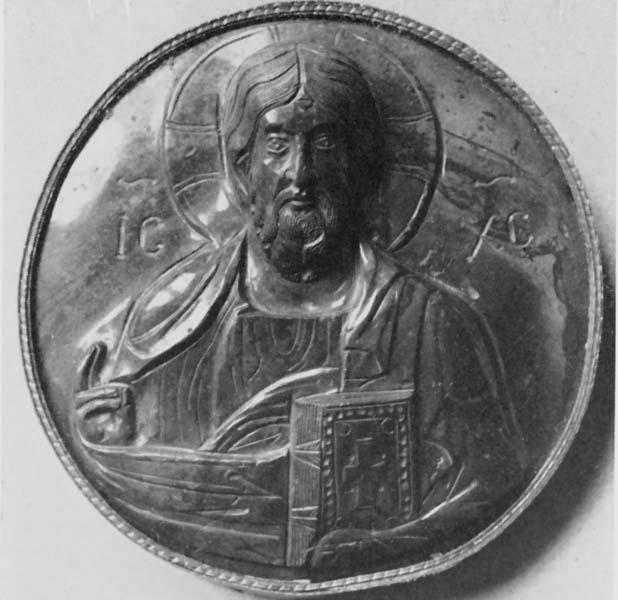
Museum Object Number: 29-128-575
Thanks to the voracious collecting habits of Maxwell Sommerville (1829–1904), the Penn Museum boasts an impressive collection of engraved gems. The former head of the Philadelphia-based publishing firm Sherman & Co., Sommerville fancied himself a glyptic scholar. His collection of 3,300 gems was donated to the Museum upon his death in 1904, but the presence of numerous obvious forgeries cast doubt on the entire collection. As a result, it was banished to the storerooms for most of the last century. Recently Dietrich Berges has reevaluated the collection and discovered a substantial number of authentic gems. One of the most extraordinary is a Byzantine jasper cameo of Christ Pantokrator, which will be briefly on display when the Byzantine Studies Conference meets at the University of Pennsylvania on October 9, 2010.
The jasper cameo recreates the most common representation of Christ in the Eastern Church of the Byzantine Empire: the Christ Pantokrator or “Ruler of All.” This theme originated in the 6th century in the form of devotional icons on wood panels but proliferated in a variety of artistic media. Mosaic renderings of the Pantokrator typically occupied the central dome of Byzantine churches, signifying Christ’s role as the ruler of heaven. The image is characterized by a bearded Christ frontally positioned before the viewer, raising his right hand in blessing and holding a jewel-encrusted Gospel book in his left. The engraved letters beside his face—IC XC—form an abbreviation of Christ’s name in Greek, while the two lines above the initials denote that this is a holy name. While all holy figures in Byzantine art are provided with halos to express their sacred status, only Christ’s halo is inscribed with a cross. In this version, the furrowed brow and slightly down-turned corners of his mouth emphasize Christ’s nature as a stern judge.
The Penn Museum Pantokrator is large by the standards of Byzantine gemstones. Carved in high relief, the dramatic effect is emphasized by the stone’s translucence, with strands of yellow and red permeating the green. Based on its stylistic similarities to a group of gemstones portraying Christ and the Virgin Mary, the point of origin is most likely Constantinople, the capital of the Byzantine Empire. Comparable gems may be found in the Content Family Collection, Houlton, Maine; the British Museum, London; the Lewis Collection in Corpus Christi College, Cambridge; and the Cabinet des Médailles in the Bibliotheque Nationale, Paris. Dates ranging from the 10th through the 12th centuries have been suggested for this group, but the high relief of the Penn Museum Pantokrator leads us to propose a 10th century date. During this period, Christian-themed gemstones were worn in a variety of jewelry settings, including brooches, bracelets, and pendants. The large scale and remarkable three-dimensionality of our cameo, however, suggests that it may have functioned as the central medallion in a decorated cross, the cover of a Gospel book, a reliquary, or a chalice. It is also possible that an emperor or patriarch wore it suspended from a gold chain for ceremonial occasions. Whatever its purpose, the Pantokrator cameo is an exceptional example of the technical skills of Byzantine artisans.
For more on the upcoming Byzantine Studies Conference, see: http://www.bsana.net/conference/index.html.
